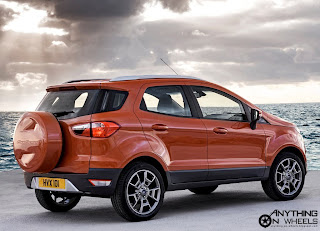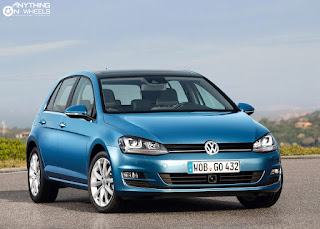If there is one automobile company in India that belts out blows to its competitors every now and then, it has got to be Bajaj. When the Pune-based Indian manufacturer launched the KTM brand in India with the Duke 200 last year, its shockingly-competitive pricing scared the daylight out of its competitors. Now, Bajaj is doing it all over again.
In what can be termed an even mightier blow, Bajaj has now launched the KTM Duke 390 in India at a staggering ex-showroom Delhi price of INR 1.8 Lakhs. Yes dear folks, that's almost 400 cc of two-wheeled bliss for less than a couple of lakhs!
Though KTM claims that the design and styling of the Duke 390 is inspired by the bigger Duke 690, we find it to be very similar to the Duke 200. That isn't surprising, as one of the main reason for the success of the Duke 200 was its attractive 'naked sports-bike' looks. The only identifiable factors differentiating the bigger-engined sibling are the huge '390' graphics in the fuel tank and the striking Trellis frame and alloy wheels that are now painted in the trademark orange colour. The vertically-stacked headlight, the super-thin taillight, the tiny indicator lamps, the sharp and angular fuel tank, the high-set rear seat, the split tyre-huggers and the exposed steel frame and mono-shocks that gave the Duke 200 its unique identity do the same job in the 390 as well. There is no doubt, this motorcycle will turn heads wherever you go.
Though KTM claims that the design and styling of the Duke 390 is inspired by the bigger Duke 690, we find it to be very similar to the Duke 200. That isn't surprising, as one of the main reason for the success of the Duke 200 was its attractive 'naked sports-bike' looks. The only identifiable factors differentiating the bigger-engined sibling are the huge '390' graphics in the fuel tank and the striking Trellis frame and alloy wheels that are now painted in the trademark orange colour. The vertically-stacked headlight, the super-thin taillight, the tiny indicator lamps, the sharp and angular fuel tank, the high-set rear seat, the split tyre-huggers and the exposed steel frame and mono-shocks that gave the Duke 200 its unique identity do the same job in the 390 as well. There is no doubt, this motorcycle will turn heads wherever you go.
Powered by a 373.2 cc, liquid cooled engine, the Duke 390 boasts a power output of 43 bhp at 9000 rpm and a torque rating of 35 Nm at 7000 rpm. Together with a claimed kerb weight of 154 kg, the Duke 390 promises to be an insanely quick bike. This single-cylinder, 4-stroke engine is loaded with a lot of advanced technological bits that include fuel-injection, 4 valves driven by twin camshafts, diamond-like carbon coated finger followers and a nikasil-coated cylinder. India-specific changes in the Duke 390 include a larger radiator and a tweaked suspension set-up. Antilock Braking System (ABS) is available as standard, complementing the 300 mm disc up front and the 230 mm disc at the rear. The Duke is known for its super-nimble handling and the 390 would be no different, shod with Metzeler tubeless radials.
Well, the technical specifications aside, Bajaj has yet again given the competition some sleepless nights with the launch of the Duke 390. For the price at which it retails and considering all that it has on offer, the Duke 390 is all set to storm the market.








































